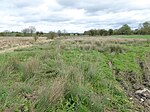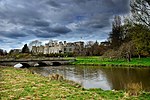Laxton, Northamptonshire
Civil parishes in NorthamptonshireModel villagesNorth NorthamptonshirePolish-British cultureUse British English from March 2014 ... and 1 more
Villages in Northamptonshire

Laxton is a village in North Northamptonshire, seven miles (11 km) east of Corby and approximately one mile (1.6 km) west of the A43. At the time of the 2001 census, the parish's population was 160 people, increasing to 234 at the 2011 census.
Excerpt from the Wikipedia article Laxton, Northamptonshire (License: CC BY-SA 3.0, Authors, Images).Laxton, Northamptonshire
Geographical coordinates (GPS) Address Nearby Places Show on map
Geographical coordinates (GPS)
| Latitude | Longitude |
|---|---|
| N 52.5564 ° | E -0.5996 ° |
Address
NN17 3AW , Laxton
England, United Kingdom
Open on Google Maps










